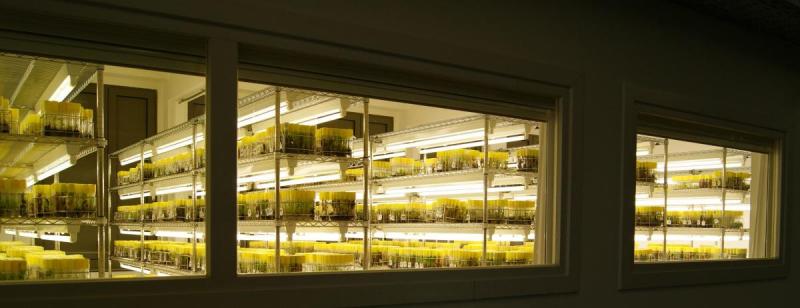The Bioversity International Transit Centre (ITC), based at the Katholieke Universiteit Leuven (KULeuven), Belgium is the world’s largest collection of Musa germplasm held in vitro. It is committed to the long-term conservation of Musa genetic resources under the auspices of the FAO in the context of a global conservation strategy supported by the Global Crop Diversity Trust. The distribution of germplasm from ITC is regulated within the framework of the International Treaty on Plant Genetic Resources for Food and Agriculture (ITPGRFA).

Who can order Germplasm?
Germplasm is distributed only for the purposes of research, breeding and training for food and agriculture as set out in the terms and conditions of the Standard Material Transfer Agreement (SMTA). In principle anyone can order germplasm as long as it is used for the purposes mentioned in the SMTA.
How can I order Germplasm?
- First of all, you need an account. If you don’t have an MGIS account please register.
- Once your account has been created, it is required to log in to the website. Then click on submenu called “Online Ordering (MOOS)” under TOOLS main menu.
Note: At this point it should be empty. - Accessions can be selected using accession search.
Note: you can narrow down the list of accessions using the "exchange availability: yes" filter. - Select the accession(s) of your choice either from the list or on the individual page of the accession (button is available at the top right corner).
- Once you are ready selecting accessions, go to Online Ordering (MOOS) and click on the link “Order Germplasm Material”
- Follow the instructions to generate the SMTA.
What is the maximum number of accessions/plants I can request?
Operating as a genebank, the ITC can only supply small amounts of accession samples . For each required accession, five tissue culture plantlets are provided. Because of the high production costs, and the number of accessions that can be requested is usually restricted to a maximum of 35 per requester and per year, however in exceptional cases, justified by the nature of the study purpose of the material, higher numbers of accessions can be supplied Please contact the genebank for further details.
What is the health status of the material?
The distribution of germplasm samples is conditional on the health status of the accessions, i.e. only germplasm virus indexed negative is made available to users.
How much does it cost?
ITC distributes germplasm free of charge.
How long does it take to receive requested material?
The delivery time of germplasm depends on the type of material requested, and the availability of the necessary legal and phytosanitary documents, including the plant import permission, issued by the importing country. Once the request is made and the SMTA is accepted and phytosanitary importation documents are available at the ITC, the delivery time for proliferating shoot tip cultures is about two months, for individual rooted plantlets four months and for freeze dried leaf tissue two weeks.
In order to keep the journey as short as possible and minimize the risk of deterioration, germplasm samples are usually shipped through air courier services are used (DHL or FedEx).
Why I don’t see any button to order an accession of the MGIS?
Only accessions conserved at the ITC can be requested. Please check that you are not considering material from another collection. Not all ITC accessions can be distributed because some of them are infected with banana viruses. Please check carefully the availability for exchange status of the accession you are looking at.
How can I check the status of my request? Who can I contact if I have questions about my order?
Please contact the genebank Ines Van den Houwe for any questions. You can also use the contact form on the MGIS website.
Where does ITC material come from?
Accessions are being sent to ITC by other partner collections, botanical gardens, breeding programs, collecting missions and even individual persons interested in collecting. When available, the origin of the material is indicated in the passport data page of the accession.
